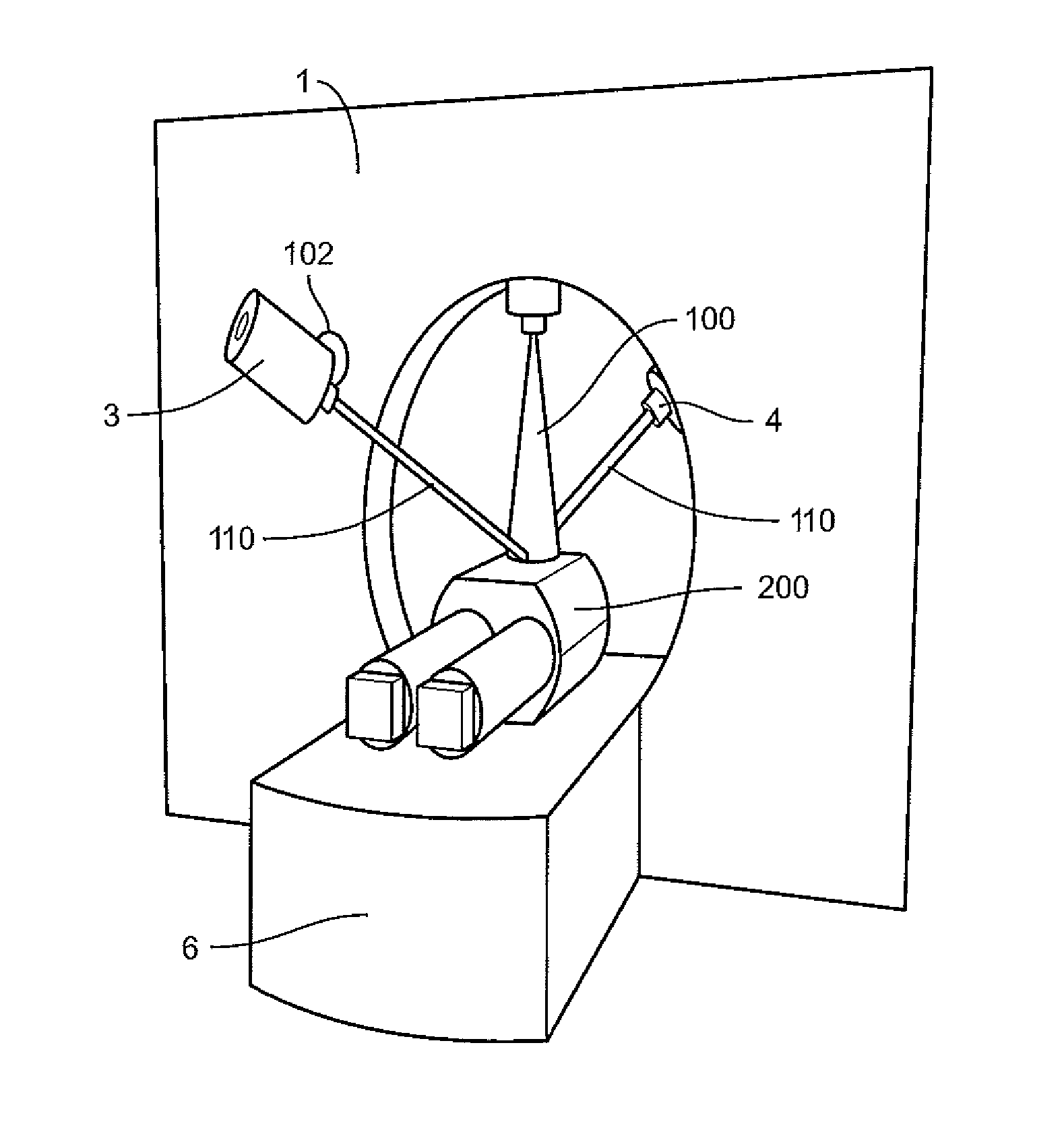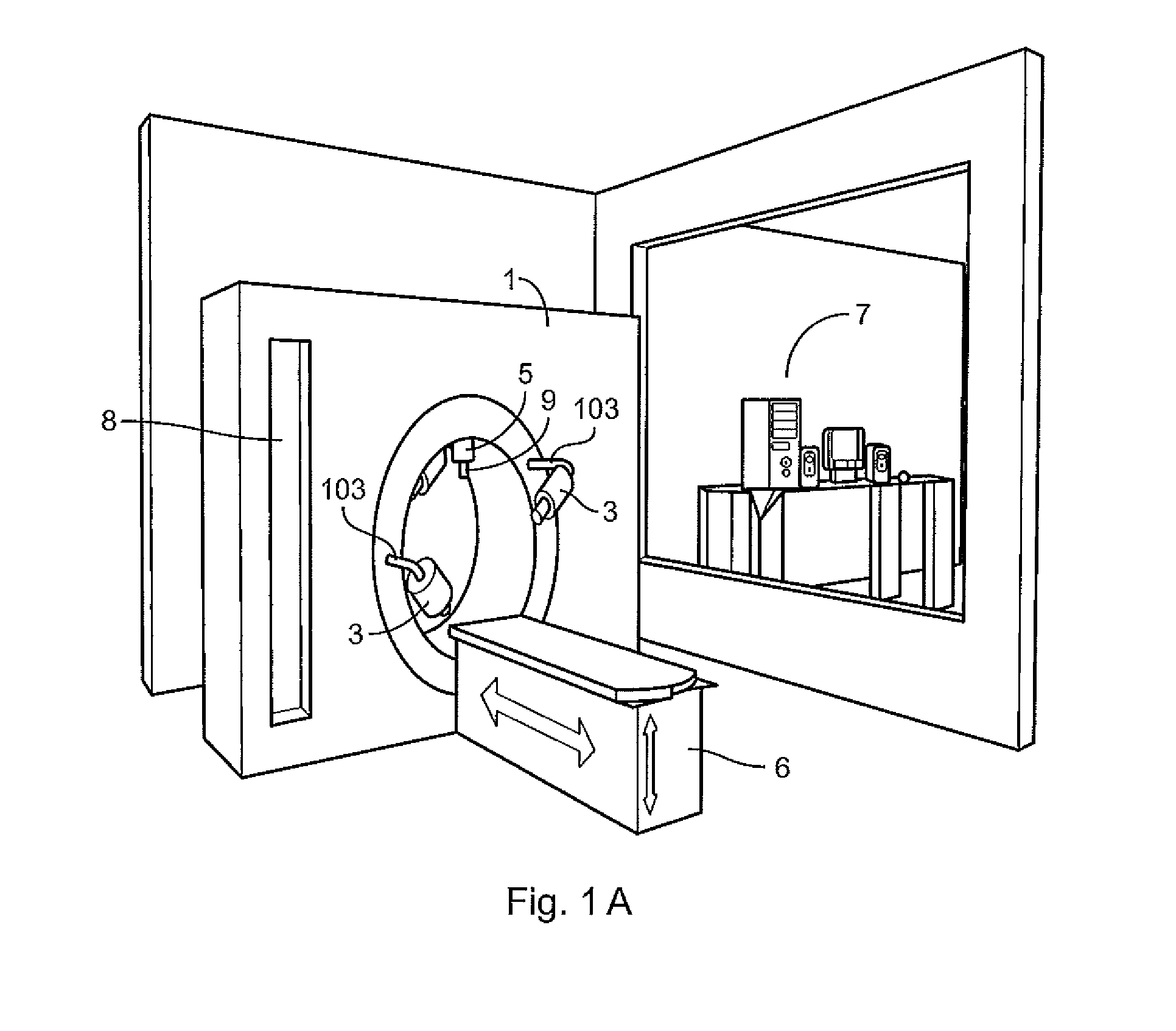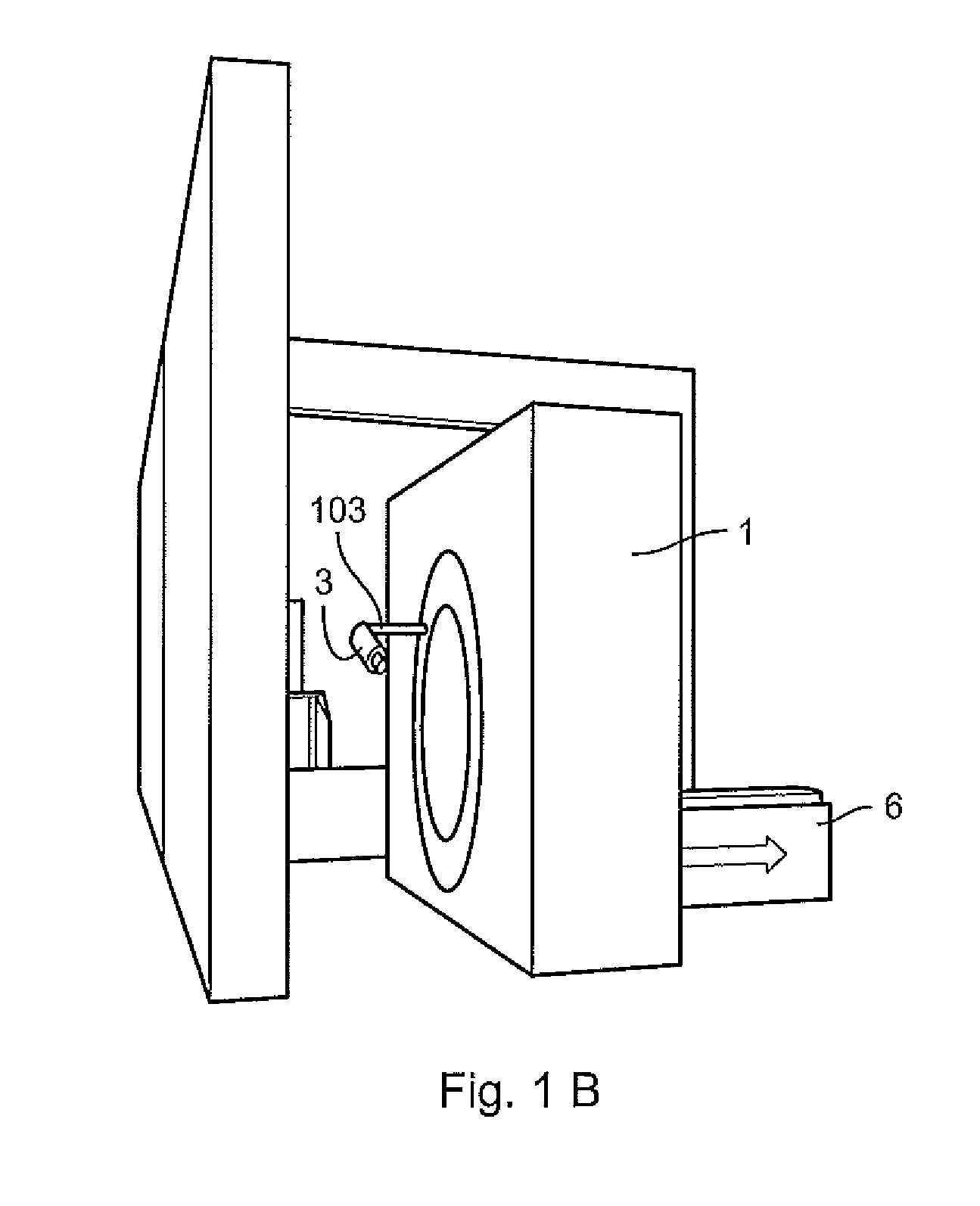Apparatus and method to carry out image guided radiotherapy with kilo-voltage X-ray beams in the presence of a contrast agent
a technology of contrast agent and kilo-voltage x-ray beam, which is applied in the field of radiotherapy and radio surgery, can solve the problems of inefficient absorbed radiation beam, limited use, and economic cost of apparatus and radiation generation, and achieve the effect of reducing the attenuation of radiation beam
- Summary
- Abstract
- Description
- Claims
- Application Information
AI Technical Summary
Benefits of technology
Problems solved by technology
Method used
Image
Examples
Embodiment Construction
[0047]The present invention provides an apparatus for radiotherapy and / or radiosurgery which includes a system for the obtention of three-dimensional images of the patient (1), a plurality of X-ray generating sources (3), a system to automatically position said X-ray generating sources in such a way that the radiation produced be directed to the site to be irradiated in the patient, and a computer to automatically control the system (8). For the sake of clarity, the present invention is described through an example, without this implying or signaling limitations on the apparatus and revealed techniques.
[0048]The central objective of radiotherapy and / or radiosurgery is to maximize radiation absorbed dose imparted to the tumor while at the same time minimizing the radiation absorbed dose received by the surrounding healthy tissues and structures. To accomplish such in conventional radiotherapy, the following conditions are required:[0049]a) Determine by means of radiological images th...
PUM
 Login to View More
Login to View More Abstract
Description
Claims
Application Information
 Login to View More
Login to View More - R&D
- Intellectual Property
- Life Sciences
- Materials
- Tech Scout
- Unparalleled Data Quality
- Higher Quality Content
- 60% Fewer Hallucinations
Browse by: Latest US Patents, China's latest patents, Technical Efficacy Thesaurus, Application Domain, Technology Topic, Popular Technical Reports.
© 2025 PatSnap. All rights reserved.Legal|Privacy policy|Modern Slavery Act Transparency Statement|Sitemap|About US| Contact US: help@patsnap.com



